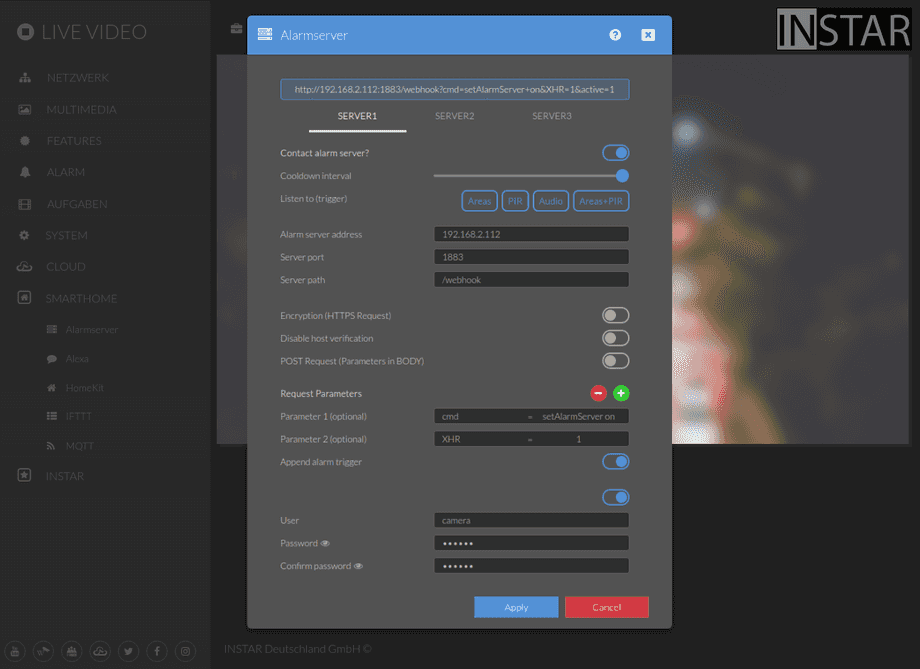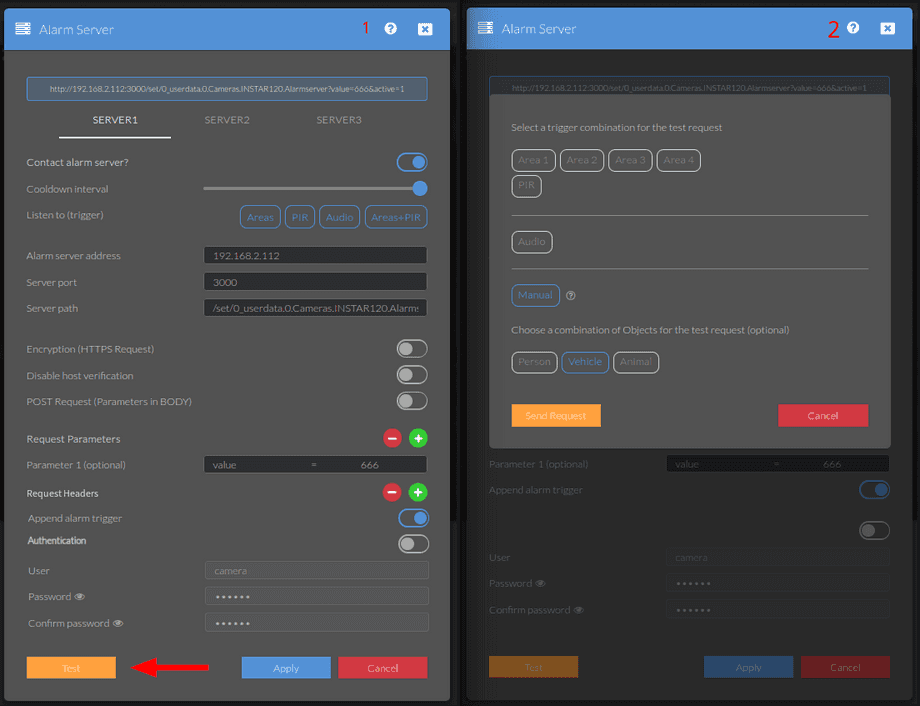UltraHD Series (2K+ 1440p & 4K 2160p) Web User Interface
Smarthome Menu
You can use the Alarm Server function to send an http request to a connected server. The server needs a compatible software to recognize this request as an alarm event and trigger further actions. This function is often supported by home alarm systems. You can add custom commands to the request to trigger specific actions in the receiving server software.
Your camera provides a fine-grained access rights system that allows you to restrict access to certain menus of the web user interface and its underlying CGI commands. The minimum permission to access this menu is:
- User Permissions:
Alarm Settings
User permissions can be modified in the user menu.
Alarm Server | Description |
|---|---|
| Contact Alarm Server | Activate the Alarm Server Function |
| Cooldown Interval | How long should the server wait to re-notify you if the alarm persists (1s - 60s) |
| Listen to Trigger | Select what sensor can trigger the alarm server: Motion Detection Areas, Passive IR Sensor, Audio Detection, Areas + PIR (coupled). |
| Alarm Server Address | Type in the IP Address of your Alarm Server - e.g. your FHEM Server. |
| Server Port | Type in the TCP Port that your Alarm Server is listening on. |
| Server Path | Type in the URL that your Server expects to see. |
| Encryption | Activate HTTPS SSL encryption for the web request |
| POST Request | Change the default GET to a POST request |
| Parameter | You can add optional parameter to the URL. |
| Append Alarm Trigger | The alarm trigger (e.g. "motion detection area 1" or "audio detection") will be added to the HTTP request in form of a query. * |
| Authentication | Add your Server Login to the URL. |
- Alarm Area 1 triggered:
&active=1 - Alarm Area 2 triggered:
&active=2 - Alarm Area 3 triggered:
&active=3 - Alarm Area 4 triggered:
&active=4 - Alarm-In or PIR triggered:
&active=5 - Audio Alarm triggered:
&active=6 - PIR & Area1 triggered (coupled):
&active=7 - PIR & Area2 triggered (coupled):
&active=8 - PIR & Area3 triggered (coupled):
&active=9 - PIR & Area4 triggered (coupled):
&active=10 - Manual Trigger (cmd=pushhostalarm):
&active=99
Alarmserver Introduction
- INSTAR Alarmserver
- Alarmserver with Custom Headers
- Alarmserver Testing
- Debugging Alarmserver Headers and Queries
Alarmserver Use-Cases:Trigger
There is a new alarm server API for WQHD 2K+ cameras. The individual steps below are still valid. Only the URL query is now called &trigger instead of &active, the numerical values have changed and now allow the evaluation of multiple, simultaneous alarm triggers! You will find an example implementation of the MQTT and HTTP alarm server v2 API with Node-RED here.
- Loxone Miniserver
- Homematic CCU3
- Homematic & RedMatic
- homee
- Homey
- IFTTT
- Home Assistant
- Node-RED under Windows
- Node-RED auf einem Raspberry Pi (openHabian)

